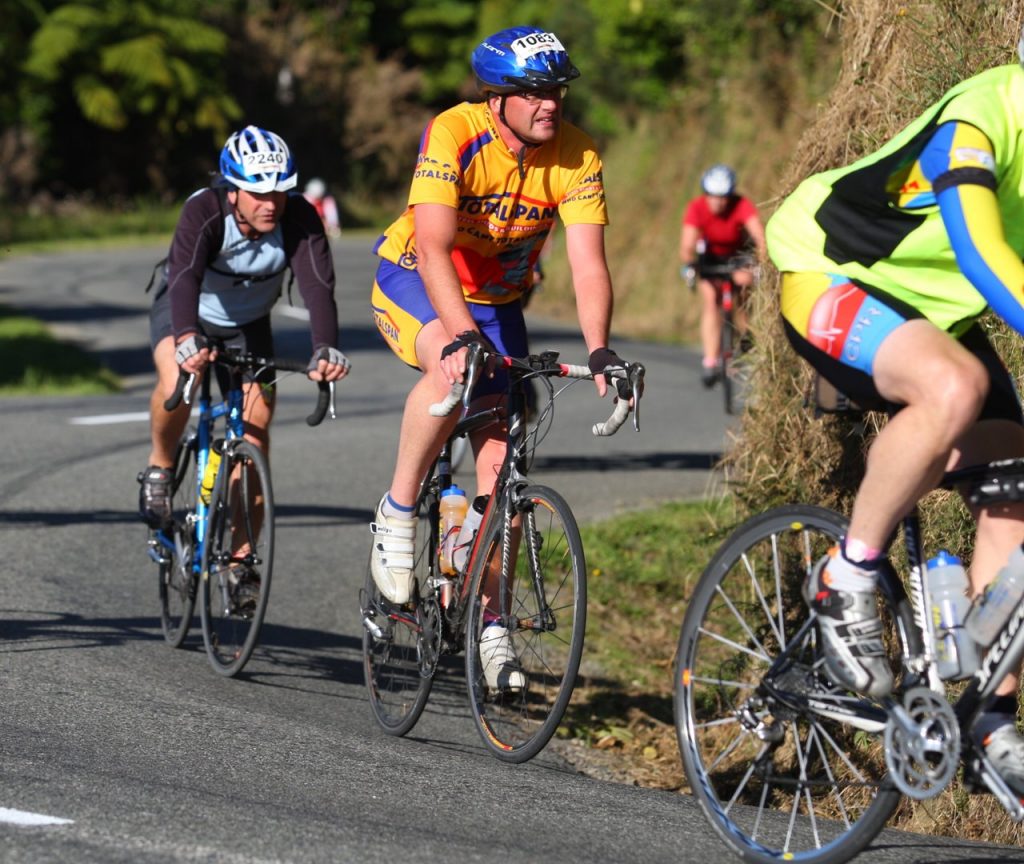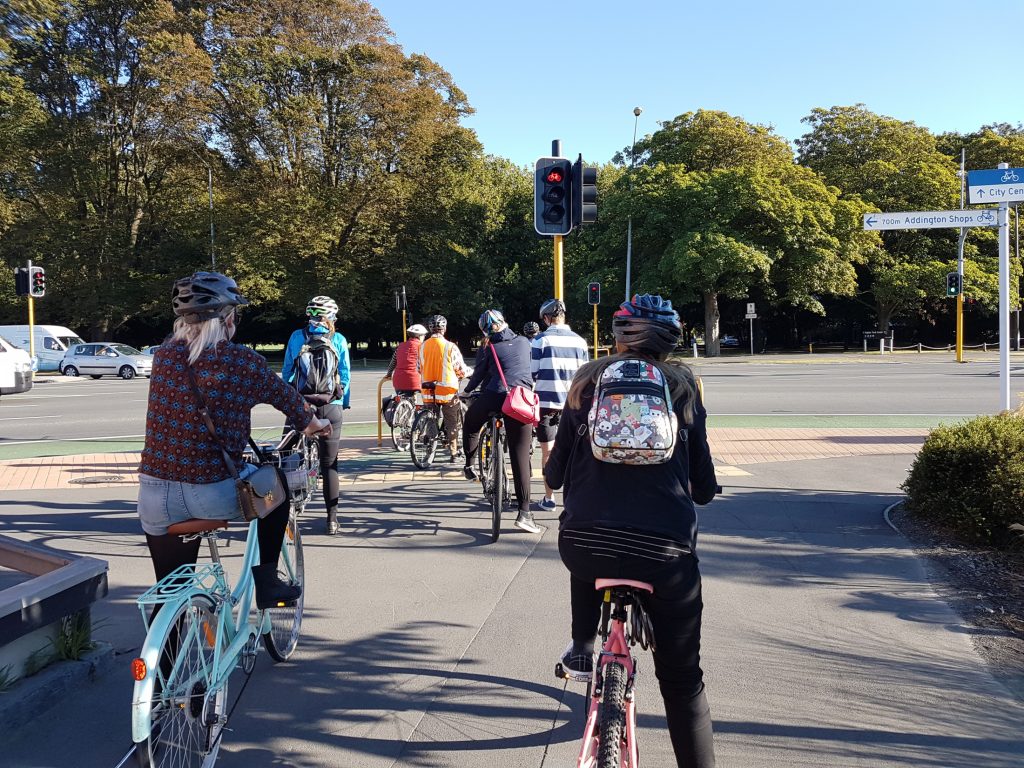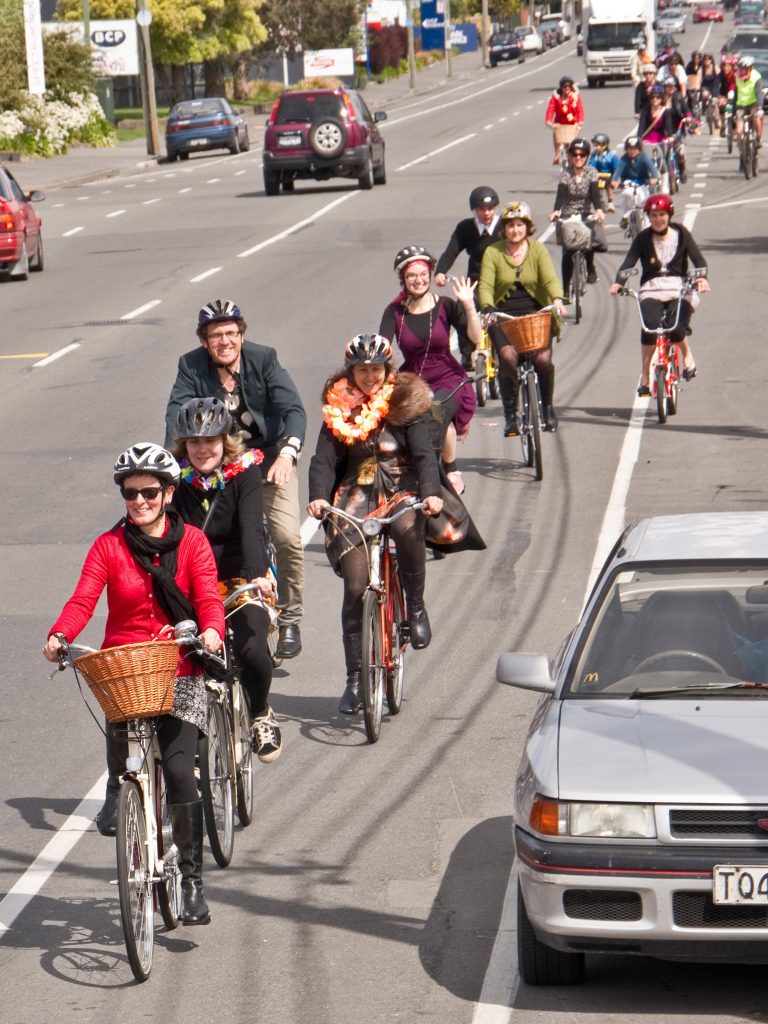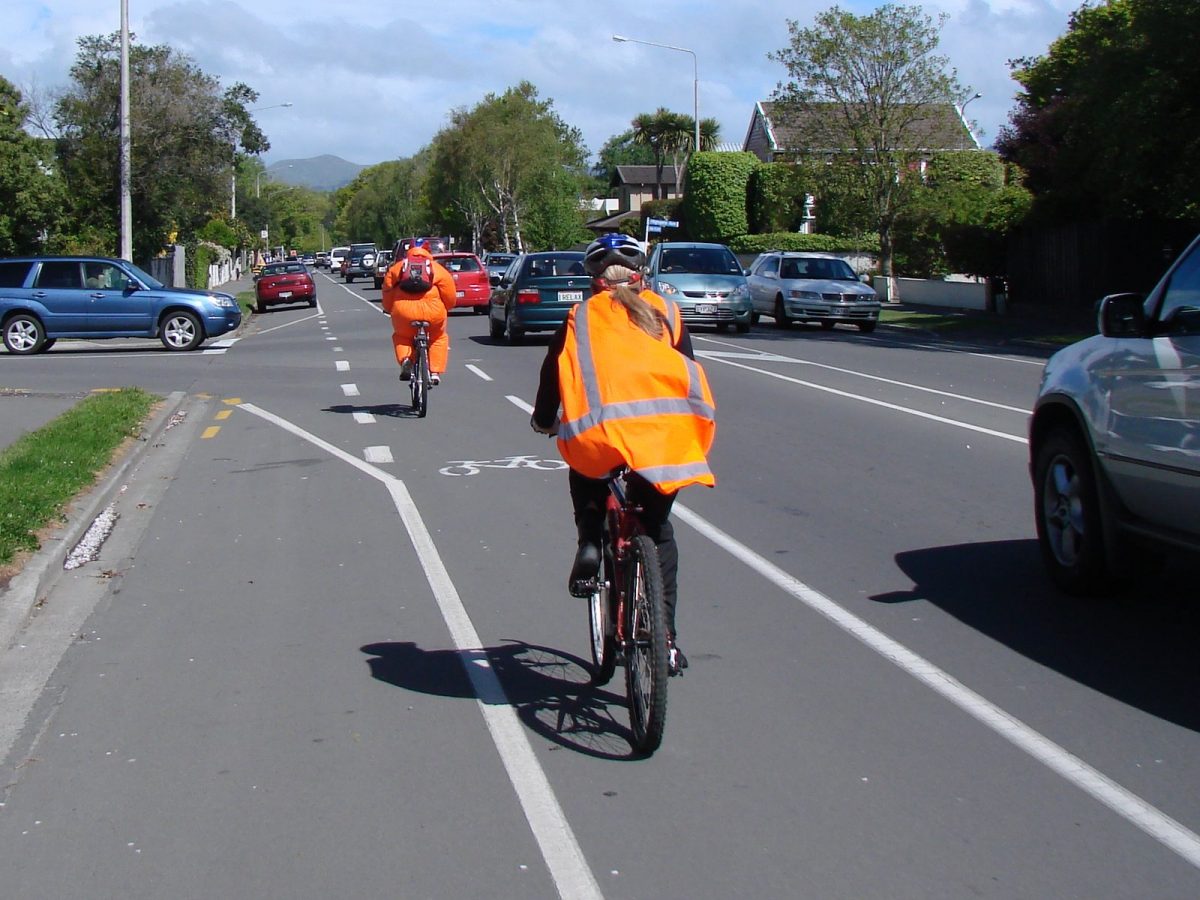One of the pervasive myths about cycling in New Zealand is that you can’t do it without wearing lycra, hi-vis, cleated shoes and the like. It has helped fuel the image of the “MAMIL” and has even been cited as a reason for putting people off cycling here. But it is in fact a complete misnomer that you need any special cycling clothes for riding a bicycle.

Of course, if you are sports cycling (racing, training) then you will probably want all the gear, in the same way that I would put on my whites and spikes if I was playing competitive cricket. But generally you can ride a bike in any clothes that you have in your wardrobe.
It’s just like walking – if you walk a few hundred metres down the street to the shops you generally don’t change or take a shower when you arrive, but if you were competitively speed-walking in the Arizona desert, you probably would. The same goes for cycling. The key thing is to dress for your destination, so wear ‘work’ clothes if biking to work, and ‘going out’ clothes if you are going for a drink with friends.

As you might expect, there are a few caveats to this general approach:
- If you are biking a reasonable distance, then you may find some clothes more comfortable than others after a while. Padded lycra, for example, does have its uses and is particularly handy to minimise chafing and a sore bum over longer distances (although no-one said you can’t cover lycra with something else!).
 At night-time or in poor visibility, you may want to put on something with a bit of a brighter colour or with some reflective elements. It’s a debatable point whether it actually increases your conspicuity to other road users (because they may not be looking at you anyway), but it may at least improve your comfort level. {Make sure you have the basics of good bike lighting first!}
At night-time or in poor visibility, you may want to put on something with a bit of a brighter colour or with some reflective elements. It’s a debatable point whether it actually increases your conspicuity to other road users (because they may not be looking at you anyway), but it may at least improve your comfort level. {Make sure you have the basics of good bike lighting first!}
- Obviously, if the weather is a bit wet or cold, you may need to dress appropriately to stay warm and dry (e.g. gloves, rain-jacket), but no more than you would if you were walking somewhere. See our separate advice on Cycling in the Wet and Cycling in the Cold.
- Women may want to be a little careful about wearing that short skirt or flowing dress, lest it betrays their modesty while riding (I guess a bloke in a kilt or a lavalava might have a similar problem…). Aside from wearing trousers instead, there are other practical options such as wearing some leggings underneath, a strategically placed hand on the lap, or using a cunningly simple trick to weight down the front of your skirt.
If you have the facilities at the other end, then it is perfectly fine to get changed into something else there (or even have a shower) if you are worried that you will be too sweaty, smelly, drenched, etc. Some people seem to view showering at the other end as an extra time penalty, but if I would have showered at home instead otherwise then it’s really only the time-cost of getting into another set of clothes. Besides, what you will probably find is that there are plenty of perfectly good trips on a bike that just don’t warrant all that fuss because you just don’t get sweaty/wet/whatever enough to worry about it. Remember, sweat doesn’t smell, poor hygiene does; if you are regularly showering, deodorising, etc then you will be fine with a bit of perspiration.
There are a growing number of groups out there dedicated to breaking down the “special clothing” barrier; for example:
-

A “Frocktober” ride in Chch Frocks on Bikes is a New Zealand initiative that set out to encourage women in particular to get cycling and to do so without the need for lycra – even riding in your Sunday best is just fine. There are a number of FoB chapters around the country (and now the world), including Christchurch, and they regularly organise events to celebrate both the “glam” and simple fun of cycling (Note: you don’t have to wear a frock – and men can join the rides too!).
- Meanwhile, for the fashionable man, various “Tweed” groups have also been set up to take cycling back to a simpler time when Sunday best (including cloth cap and jacket) was expected riding attire; that includes the local Christchurch Tweed Riders (although it’s been a bit quiet lately).
- Internationally, a whole movement of “Cycle Chic” has started up, initially in Copenhagen but now seen throughout the world. Looking more like a fashion site than a cycling one, Cycle Chic simply captures great examples of ordinary people riding around their respective cities with great clothing and/or styley bikes.
- I guess the ultimate “clothing barrier” is the World Naked Bike Ride movement [Warning: NSFW], but I wouldn’t recommend it for regular cycling around town! (and it could even land you in trouble if you fail to wear the minimum legal equipment…)
Ultimately, the golden rule is wear what you are comfortable with. If you want to wear your “normal clothes”, go for it. If you feel more comfortable with a bit of hi-vis on, go for it. If you’d rather have some extra padding on your seat, go for it. And so on… Whatever you’re wearing, the most important thing is that you are cycling!

What do YOU typically wear when you’re cycling?


I have always cycled in whatever I was wearing for where I was going. No need for special padding as you get used to it all, though if touring padding is nice.
If showering is not an option, give yourself more time and apply less effort. Usually works, though steep hills and stiff winds can be an issue.
But the joy of cycling is almost always worth it.
I wear what ever it is I want to have on when I get to my destination.
And yes that can mean dresses or skirts with heels.
I am after all not in a bike race so don’t need to get all sweaty just like I wouldn’t if I was walking somewhere. But biking is more fun and faster than walking so why would anyone walk if they can bike.